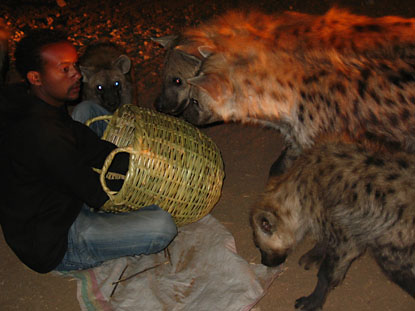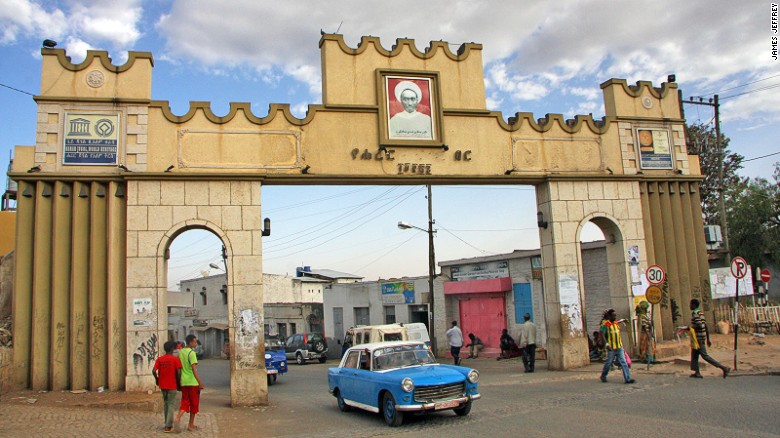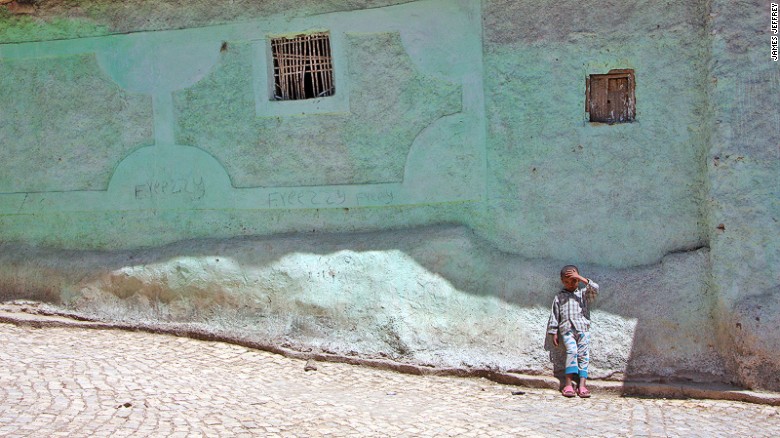You are using an out of date browser. It may not display this or other websites correctly.
You should upgrade or use an alternative browser.
You should upgrade or use an alternative browser.
Essential The Official African History Thread
- Thread starter ↓R↑LYB
- Start date
More options
Who Replied?How the Story of Christmas Saved Islam
As a writer, I have always appreciated how Christmas is a time for great storytelling. Some of the most moving parables ever told have been inspired by this special time of year. A Christmas Carol by Charles dikkens continues to touch the heart, 166 years after it was first published. The journey of Ebenezer Scrooge from cruel miser to loving community man strikes a chord in the human spirit, and has led to numerous film adaptations, including the most recent CGI bonanza by Robert Zemeckis.
Other important works that reflect the Christmas message of love and giving are O. Henry's short story The Gift of the Magi, where a husband and wife each part with their most treasured possessions to give a gift to each other, only to discover that each has given away what was needed to enjoy the other's present. The husband sold his beloved pocket watch to buy a jeweled comb, only to learn that his wife has cut her luxurious hair and sold it to a wigmaker in order to buy him a watch chain. That story still manages to bring tears to my eyes, which is perhaps the essence of any good Christmas tale.
While those are familiar stories to millions of people, I would like to share a Christmas story that many people today do not know. The true story of how the tale of Jesus and Mary saved the nascent religion of Islam from annihilation.
In my novel, Mother of the Believers, I recount this remarkable story. Six hundred years after the birth of Jesus Christ, the once tiny and persecuted faith founded in his name had become a global power. Christianity had become the official state religion of the Roman Empire and its successor, Byzantium. But as Jesus warned, power corrupts, and his simple message of love for God and humanity had been eclipsed by the cruel politics of governing an empire.
Christianity at the time was threatened by both external enemies and internal division. The Byzantines were locked in a struggle of superpowers with the neighboring Persian Empire, and millions were dying in the never-ending state of war between these two societies. Internally, arguments about theology had split the Church into a variety of factions and sects, each claiming to properly understand the nature of Christ and his teachings. Groups like the Egyptian Copts that failed to follow the "official" theological line coming out of Rome and Byzantium were persecuted by their fellow Christians. Jews were prohibited from living in Jerusalem and suffered mightily under the yoke of their Christian overlords.
Yet in the midst of this turbulent time, something unusual was happening in the desert wastes of Arabia. The Arabs had for centuries lived outside the boundaries of civilization, ignored by the great empires around them as nomadic herders with no government and limited social order based on tribal affiliation. There were no courts of law, and justice was meted out through the tribal principle of retaliation. If a member of a powerful tribe killed someone from another strong clan, a blood feud would ensue between the two groups, continuing sometimes for generations. But if someone came from a poor family, from a weak tribe, there would be no one to come to their aid or avenge any injustice against them. Women were regularly subjected to rape by bandits and raiders, and infant girls were often buried alive by fathers angry that their wives had not given them sons.
Poverty and illiteracy was the norm, and survival of the fittest the only principle of life. Religion had had little to offer to alleviate the suffering of the people; indeed the religious life of Arabia added to its misery. The Arabs worshipped a pantheon of competing gods, nature spirits that they prayed to but which offered little back in terms of spiritual comfort, and no hope for any life past the grave. The profound truths that Jesus Christ had proclaimed of faith being about service and love for mankind had not penetrated into the hearts of these hardened desert survivors, and the idea of religion being the basis for charity and social justice was beyond their comprehension.
The world of 7th century Arabia would have made modern day Afghanistan look like an advanced civilization.
And yet despite its primitive state of affairs, something truly remarkable was happening in Arabia at that time. A man named Muhammad had a vision of the Angel Gabriel telling him that God had sent him as a Prophet to lead the Arabs out of darkness into light. That the time had come that the children of Abraham though his son Ishmael rejoin their father's community by worshipping the One God, the God of Moses and Jesus. A God of love and justice, who enjoined charity and mercy among mankind. A God who commanded men to treat women with honor and to protect their children, not bury them alive.
The Prophet's message was met as a new faith always is -- with derision and ridicule. The wealthy oligarchs of his city Mecca found his admonitions to give to the poor offensive, his call for an end to the blood feuds and the cruel traditions of their ancestors an insult to their culture. And more importantly, Muhammad's proclamation of One God was a direct threat to their pocketbooks. Mecca had become the center of trade in the region, as it hosted the Kaaba, an ancient shrine once built by Abraham for his God, but now dedicated to the local tribal deities. The annual pilgrimage when Arabs from all over the peninsula came to worship their gods at the Kaaba brought in huge revenue -- and the Prophet's proclamation that these deities were illusory was a dagger at the heart of Mecca's wealth.
The early followers of Prophet Muhammad were, not surprisingly, from the poor and the weak. Those who had no protection from the ravages of society found hope in the new movement, known as Islam, which meant simply "to surrender oneself to God" -- the essential teaching of all of God's messengers, from Abraham through Jesus Christ. And yet, as persecution worsened, and Meccans began to attack and kill the Muslims ("those who had surrendered to God"), it became clear that the movement had to escape from the clutches of the tribal lords and find safety elsewhere.
Many may be familiar with the "hijrah" or "emigration" -- the famous moment in 622 C.E. when Prophet Muhammad escaped from Mecca and established a community in the oasis of Medina to the north. From there, Islam blossomed and become a global religion and civilization within only a few years. The hijrah was the turning point of Islam, and Muslims to this day mark it as Year 1 of their calendar.
Yet the hijrah to Medina was not the first emigration in Islam. It was the second.
And our Christmas story begins with that first emigration, to the Christian kingdom of Abyssinia, in modern day Ethiopia.
In 615 C.E., five years after the prophet's first vision of Gabriel, persecution of the Muslims had become a life-and-death matter. A Muslim woman named Sumaya, the first martyr of Islam, had been publicly murdered by a Meccan tribal chief. The weakest members of the community, such as the African slave Bilal, were subjected to torture. And the Arab chieftains were coming together to proclaim a ban of trade with the Muslims, prohibiting citizens of Mecca from providing food and medicine to members of the new movement.
Facing the very real possibility of extinction, a small group of Muslims led by the Prophet's daughter Ruqayya and his son-in-law Uthman, escaped Meccan patrols and managed to get to the Red Sea, where they fled to Abyssinia by boat. They sought the protection of the Negus, the Christian king who had a reputation for justice.
The Meccan chieftains were outraged when they learned of the Muslim escape to Abyssinia. Trade with Africa was important to their economic power, and the arrival of dissident Arabs in the Abyssinian court could create an embarrassing diplomatic problem. The tribal lords dispatched Amr ibn al-As, a respected merchant who had befriended the Negus, to recover the Muslim refugees before they could harm Mecca's image with its trading partners.
Amr arrived with expensive gifts and honeyed words for the Negus. He advised the king that the Muslim refugees were criminals and asked that they be repatriated to Mecca. The Negus was concerned that he could be harboring troublemakers in his kingdom and summoned the Muslim refugees to his court to answer the allegations.
It was a tense moment, as the Muslims were brought before the Negus and the Meccan delegation. If things went badly, they would be handed over to Amr to be taken back against their will. In reality, they knew that once they were in Amr's hands, they would probably never see Mecca. In all likelihood, they would be killed long before they reached their erstwhile home.
When the Muslims responded that they were not criminals but victims of religious persecution, the Negus asked: "What is this religion wherein you have become separate from your people, though you have not entered my religion nor that of any other of the folk that surround us?"
The Prophet's cousin Ja'far, known for his eloquent speech, stepped forward and said:
"O King, we were people steeped in ignorance, worshiping idols, eating unsacrificed carrion, committing abominations, and the strong would devour the weak. Thus we were, until God sent us a Messenger from out of our midst, one whose lineage we knew, and his veracity and his worthiness of trust and his integrity. He called us unto God, that we should testify to His Oneness and worship Him and renounce what we and our fathers had worshiped in the way of stones and idols; and he commanded us to speak truly, to fulfill our promises, to respect the ties of kinship and the rights of our neighbors, and to refrain from crimes and from bloodshed. So we worship God alone, setting naught beside Him, counting as forbidden what He has forbidden and as licit what He has allowed. For these reasons have our people turned against us, and have persecuted us to make us forsake our religion and revert from the worship of God to the worship of idols. That is why we have come to your country, having chosen you above all others; and we have been happy in your protection, and it is our hope, O King, that here with you we shall not suffer wrong."
The Negus, a devout Christian, was intrigued by Ja'far's words and asked him if this Prophet had brought a scripture like the messengers of old. Ja'far nodded, saying that their Scripture was the Qur'an, which means recitation in Arabic. The Negus asked them to recite from their holy book.
And Ja'far recited for them a verse that had been revealed to the Prophet about the birth of Jesus Christ, who was revered as one of God's messenger's by the Muslims.
"And make mention of Mary in the Book, when she withdrew from her people unto a place towards the east, and secluded herself from them; and We sent unto her Our Spirit, and it appeared unto her in the likeness of a perfect man. She said: I take refuge from you in the Infinitely Good, if any piety you have. He said: I am none other than a messenger from your Lord that I may bestow on you a son most pure. She said: How can there be for me a son, when no man has touched me, nor am I unchaste? He said: Even so shall it be; your Lord says: It is easy for Me. That We may make him a sign for mankind and a mercy from Us; and it is a thing ordained." (19:16-21)
The Negus was deeply moved to hear the story of Christ's miraculous conception in the Muslim scripture. He said to his guests:
"This has truly come from the same source as that which Jesus brought."
The Meccans became alarmed. The shared love for Jesus and Mary had created a bond between the Christians and Muslims that threatened to disrupt the Meccan scheme. Amr, who knew that the Muslims saw Jesus as a human messenger of God rather than a divine being, quickly tried to create a rift between the two communities.
"O King, they utter an enormous lie about Jesus the son of Mary. They call him a slave!"
The Abyssinian priests gasped at this apparent blasphemy. The Christian king tensed. He turned to the Muslims with a frown.
"What do you say about Jesus?"
Ja'far could only tell the truth.
"We say of him what our Prophet brought unto us, that he is the servant of God and His Messenger and His Spirit and His Word which He cast unto Mary the blessed virgin."
A tense silence fell on the crowd. And then the Negus smiled.
For him, the differences between Christian and Muslim visions of Jesus were just semantics. He had tired of the kind of theological disputes that had torn apart his fellow Christians and had led to never-ending accusations of heresy and warfare between competing Christian groups. Arguments over complicated theologies about the nature of Christ were not what mattered to him as a Christian. What mattered was that God had sent Jesus Christ to teach humanity love. And the Muslims clearly loved Jesus Christ.
"Go your ways, for you are safe in my land. Not for mountains of gold would I harm a single man of you."
And then he sent his attendant to the Meccan envoys.
"Return unto these two men their gifts, for I have no use for them."
And in that moment, Islam found its first refuge. In a Christian land, under the protection of a Christian king who viewed Muslims as his brothers and sisters.
The history of Christianity's relationship with Islam has not always been so cordial. From the Crusades to the horrors of September 11th, both communities have committed atrocities against the other.
And yet it was not so at the beginning. And perhaps it will not be so at the end.
For me as a Muslim, this story of how Christians and Muslims could get past theology and see the truth in each other's hearts is one of the most beautiful tales to unite our communities as we struggle to define faith in the 21st century.
And like the story of Christmas itself, I believe that the tale of the Christian king and the Muslim refugees is not just a memory of a time long past. It is, I hope, a vision of a world still to come. A world that will be built by sincere people of faith, who care more about love for humanity than about the triumph of their own tribe or theology.
It is, God-willing, a prophecy.
On behalf of your Muslim brothers and sisters, I wish you all a joyous Christma
As a writer, I have always appreciated how Christmas is a time for great storytelling. Some of the most moving parables ever told have been inspired by this special time of year. A Christmas Carol by Charles dikkens continues to touch the heart, 166 years after it was first published. The journey of Ebenezer Scrooge from cruel miser to loving community man strikes a chord in the human spirit, and has led to numerous film adaptations, including the most recent CGI bonanza by Robert Zemeckis.
Other important works that reflect the Christmas message of love and giving are O. Henry's short story The Gift of the Magi, where a husband and wife each part with their most treasured possessions to give a gift to each other, only to discover that each has given away what was needed to enjoy the other's present. The husband sold his beloved pocket watch to buy a jeweled comb, only to learn that his wife has cut her luxurious hair and sold it to a wigmaker in order to buy him a watch chain. That story still manages to bring tears to my eyes, which is perhaps the essence of any good Christmas tale.
While those are familiar stories to millions of people, I would like to share a Christmas story that many people today do not know. The true story of how the tale of Jesus and Mary saved the nascent religion of Islam from annihilation.
In my novel, Mother of the Believers, I recount this remarkable story. Six hundred years after the birth of Jesus Christ, the once tiny and persecuted faith founded in his name had become a global power. Christianity had become the official state religion of the Roman Empire and its successor, Byzantium. But as Jesus warned, power corrupts, and his simple message of love for God and humanity had been eclipsed by the cruel politics of governing an empire.
Christianity at the time was threatened by both external enemies and internal division. The Byzantines were locked in a struggle of superpowers with the neighboring Persian Empire, and millions were dying in the never-ending state of war between these two societies. Internally, arguments about theology had split the Church into a variety of factions and sects, each claiming to properly understand the nature of Christ and his teachings. Groups like the Egyptian Copts that failed to follow the "official" theological line coming out of Rome and Byzantium were persecuted by their fellow Christians. Jews were prohibited from living in Jerusalem and suffered mightily under the yoke of their Christian overlords.
Yet in the midst of this turbulent time, something unusual was happening in the desert wastes of Arabia. The Arabs had for centuries lived outside the boundaries of civilization, ignored by the great empires around them as nomadic herders with no government and limited social order based on tribal affiliation. There were no courts of law, and justice was meted out through the tribal principle of retaliation. If a member of a powerful tribe killed someone from another strong clan, a blood feud would ensue between the two groups, continuing sometimes for generations. But if someone came from a poor family, from a weak tribe, there would be no one to come to their aid or avenge any injustice against them. Women were regularly subjected to rape by bandits and raiders, and infant girls were often buried alive by fathers angry that their wives had not given them sons.
Poverty and illiteracy was the norm, and survival of the fittest the only principle of life. Religion had had little to offer to alleviate the suffering of the people; indeed the religious life of Arabia added to its misery. The Arabs worshipped a pantheon of competing gods, nature spirits that they prayed to but which offered little back in terms of spiritual comfort, and no hope for any life past the grave. The profound truths that Jesus Christ had proclaimed of faith being about service and love for mankind had not penetrated into the hearts of these hardened desert survivors, and the idea of religion being the basis for charity and social justice was beyond their comprehension.
The world of 7th century Arabia would have made modern day Afghanistan look like an advanced civilization.
And yet despite its primitive state of affairs, something truly remarkable was happening in Arabia at that time. A man named Muhammad had a vision of the Angel Gabriel telling him that God had sent him as a Prophet to lead the Arabs out of darkness into light. That the time had come that the children of Abraham though his son Ishmael rejoin their father's community by worshipping the One God, the God of Moses and Jesus. A God of love and justice, who enjoined charity and mercy among mankind. A God who commanded men to treat women with honor and to protect their children, not bury them alive.
The Prophet's message was met as a new faith always is -- with derision and ridicule. The wealthy oligarchs of his city Mecca found his admonitions to give to the poor offensive, his call for an end to the blood feuds and the cruel traditions of their ancestors an insult to their culture. And more importantly, Muhammad's proclamation of One God was a direct threat to their pocketbooks. Mecca had become the center of trade in the region, as it hosted the Kaaba, an ancient shrine once built by Abraham for his God, but now dedicated to the local tribal deities. The annual pilgrimage when Arabs from all over the peninsula came to worship their gods at the Kaaba brought in huge revenue -- and the Prophet's proclamation that these deities were illusory was a dagger at the heart of Mecca's wealth.
The early followers of Prophet Muhammad were, not surprisingly, from the poor and the weak. Those who had no protection from the ravages of society found hope in the new movement, known as Islam, which meant simply "to surrender oneself to God" -- the essential teaching of all of God's messengers, from Abraham through Jesus Christ. And yet, as persecution worsened, and Meccans began to attack and kill the Muslims ("those who had surrendered to God"), it became clear that the movement had to escape from the clutches of the tribal lords and find safety elsewhere.
Many may be familiar with the "hijrah" or "emigration" -- the famous moment in 622 C.E. when Prophet Muhammad escaped from Mecca and established a community in the oasis of Medina to the north. From there, Islam blossomed and become a global religion and civilization within only a few years. The hijrah was the turning point of Islam, and Muslims to this day mark it as Year 1 of their calendar.
Yet the hijrah to Medina was not the first emigration in Islam. It was the second.
And our Christmas story begins with that first emigration, to the Christian kingdom of Abyssinia, in modern day Ethiopia.
In 615 C.E., five years after the prophet's first vision of Gabriel, persecution of the Muslims had become a life-and-death matter. A Muslim woman named Sumaya, the first martyr of Islam, had been publicly murdered by a Meccan tribal chief. The weakest members of the community, such as the African slave Bilal, were subjected to torture. And the Arab chieftains were coming together to proclaim a ban of trade with the Muslims, prohibiting citizens of Mecca from providing food and medicine to members of the new movement.
Facing the very real possibility of extinction, a small group of Muslims led by the Prophet's daughter Ruqayya and his son-in-law Uthman, escaped Meccan patrols and managed to get to the Red Sea, where they fled to Abyssinia by boat. They sought the protection of the Negus, the Christian king who had a reputation for justice.
The Meccan chieftains were outraged when they learned of the Muslim escape to Abyssinia. Trade with Africa was important to their economic power, and the arrival of dissident Arabs in the Abyssinian court could create an embarrassing diplomatic problem. The tribal lords dispatched Amr ibn al-As, a respected merchant who had befriended the Negus, to recover the Muslim refugees before they could harm Mecca's image with its trading partners.
Amr arrived with expensive gifts and honeyed words for the Negus. He advised the king that the Muslim refugees were criminals and asked that they be repatriated to Mecca. The Negus was concerned that he could be harboring troublemakers in his kingdom and summoned the Muslim refugees to his court to answer the allegations.
It was a tense moment, as the Muslims were brought before the Negus and the Meccan delegation. If things went badly, they would be handed over to Amr to be taken back against their will. In reality, they knew that once they were in Amr's hands, they would probably never see Mecca. In all likelihood, they would be killed long before they reached their erstwhile home.
When the Muslims responded that they were not criminals but victims of religious persecution, the Negus asked: "What is this religion wherein you have become separate from your people, though you have not entered my religion nor that of any other of the folk that surround us?"
The Prophet's cousin Ja'far, known for his eloquent speech, stepped forward and said:
"O King, we were people steeped in ignorance, worshiping idols, eating unsacrificed carrion, committing abominations, and the strong would devour the weak. Thus we were, until God sent us a Messenger from out of our midst, one whose lineage we knew, and his veracity and his worthiness of trust and his integrity. He called us unto God, that we should testify to His Oneness and worship Him and renounce what we and our fathers had worshiped in the way of stones and idols; and he commanded us to speak truly, to fulfill our promises, to respect the ties of kinship and the rights of our neighbors, and to refrain from crimes and from bloodshed. So we worship God alone, setting naught beside Him, counting as forbidden what He has forbidden and as licit what He has allowed. For these reasons have our people turned against us, and have persecuted us to make us forsake our religion and revert from the worship of God to the worship of idols. That is why we have come to your country, having chosen you above all others; and we have been happy in your protection, and it is our hope, O King, that here with you we shall not suffer wrong."
The Negus, a devout Christian, was intrigued by Ja'far's words and asked him if this Prophet had brought a scripture like the messengers of old. Ja'far nodded, saying that their Scripture was the Qur'an, which means recitation in Arabic. The Negus asked them to recite from their holy book.
And Ja'far recited for them a verse that had been revealed to the Prophet about the birth of Jesus Christ, who was revered as one of God's messenger's by the Muslims.
"And make mention of Mary in the Book, when she withdrew from her people unto a place towards the east, and secluded herself from them; and We sent unto her Our Spirit, and it appeared unto her in the likeness of a perfect man. She said: I take refuge from you in the Infinitely Good, if any piety you have. He said: I am none other than a messenger from your Lord that I may bestow on you a son most pure. She said: How can there be for me a son, when no man has touched me, nor am I unchaste? He said: Even so shall it be; your Lord says: It is easy for Me. That We may make him a sign for mankind and a mercy from Us; and it is a thing ordained." (19:16-21)
The Negus was deeply moved to hear the story of Christ's miraculous conception in the Muslim scripture. He said to his guests:
"This has truly come from the same source as that which Jesus brought."
The Meccans became alarmed. The shared love for Jesus and Mary had created a bond between the Christians and Muslims that threatened to disrupt the Meccan scheme. Amr, who knew that the Muslims saw Jesus as a human messenger of God rather than a divine being, quickly tried to create a rift between the two communities.
"O King, they utter an enormous lie about Jesus the son of Mary. They call him a slave!"
The Abyssinian priests gasped at this apparent blasphemy. The Christian king tensed. He turned to the Muslims with a frown.
"What do you say about Jesus?"
Ja'far could only tell the truth.
"We say of him what our Prophet brought unto us, that he is the servant of God and His Messenger and His Spirit and His Word which He cast unto Mary the blessed virgin."
A tense silence fell on the crowd. And then the Negus smiled.
For him, the differences between Christian and Muslim visions of Jesus were just semantics. He had tired of the kind of theological disputes that had torn apart his fellow Christians and had led to never-ending accusations of heresy and warfare between competing Christian groups. Arguments over complicated theologies about the nature of Christ were not what mattered to him as a Christian. What mattered was that God had sent Jesus Christ to teach humanity love. And the Muslims clearly loved Jesus Christ.
"Go your ways, for you are safe in my land. Not for mountains of gold would I harm a single man of you."
And then he sent his attendant to the Meccan envoys.
"Return unto these two men their gifts, for I have no use for them."
And in that moment, Islam found its first refuge. In a Christian land, under the protection of a Christian king who viewed Muslims as his brothers and sisters.
The history of Christianity's relationship with Islam has not always been so cordial. From the Crusades to the horrors of September 11th, both communities have committed atrocities against the other.
And yet it was not so at the beginning. And perhaps it will not be so at the end.
For me as a Muslim, this story of how Christians and Muslims could get past theology and see the truth in each other's hearts is one of the most beautiful tales to unite our communities as we struggle to define faith in the 21st century.
And like the story of Christmas itself, I believe that the tale of the Christian king and the Muslim refugees is not just a memory of a time long past. It is, I hope, a vision of a world still to come. A world that will be built by sincere people of faith, who care more about love for humanity than about the triumph of their own tribe or theology.
It is, God-willing, a prophecy.
On behalf of your Muslim brothers and sisters, I wish you all a joyous Christma
↓R↑LYB
I trained Sheng Long and Shonuff
I need to get this poster somewhere
http://www.art.com/gallery/id--a537/ludwig-deutsch-posters.htm?ui=FAD23CB9B5154A5F9BB3D2A69F61BDBD
If you wanna cop, they usually got sales going on so I'd wait for those. Right now they got em for 35% off. Last week it was like 50% I think.
- Joined
- Apr 30, 2012
- Messages
- 42,422
- Reputation
- 3,740
- Daps
- 152,115
- Reppin
- black love, unity, and music
Have a few paintings of ludwig deutsch hanging in my crip. Love his work
http://www.art.com/gallery/id--a537/ludwig-deutsch-posters.htm?ui=FAD23CB9B5154A5F9BB3D2A69F61BDBD
If you wanna cop, they usually got sales going on so I'd wait for those. Right now they got em for 35% off. Last week it was like 50% I think.
 the price.
the price.CinnaSlim
Queen of Swords
Don't know if posted but,
Some dope pre-colonial Akan architecture:
drop your sources please bro.
Akan region is where I'm from spiritually.
The majority of Africans taken to Jamaica were from the Akan tribe.
Misreeya
Pro
North Sudan

Aegis Isis Meroitic period
http://www.britishmuseum.org/explore/highlights/highlight_objects/aes/a/aegis_of_isis.aspx
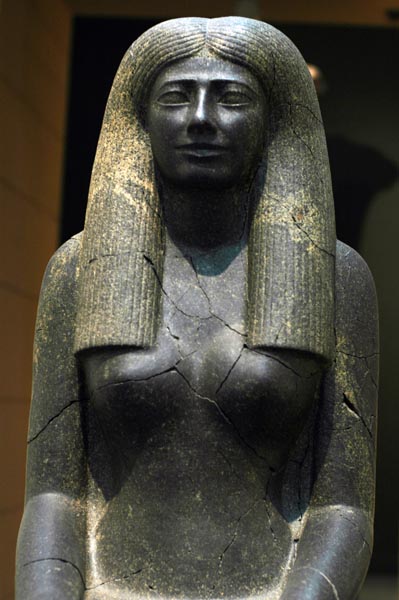
Statue of Lady Sennuwy
El Kurru Tomb and temple

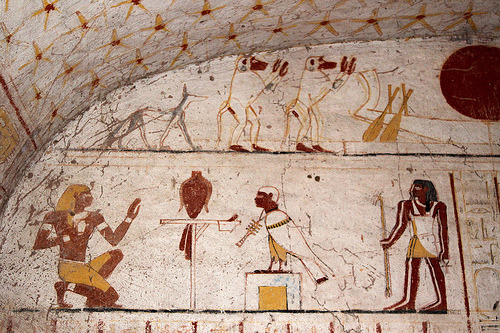

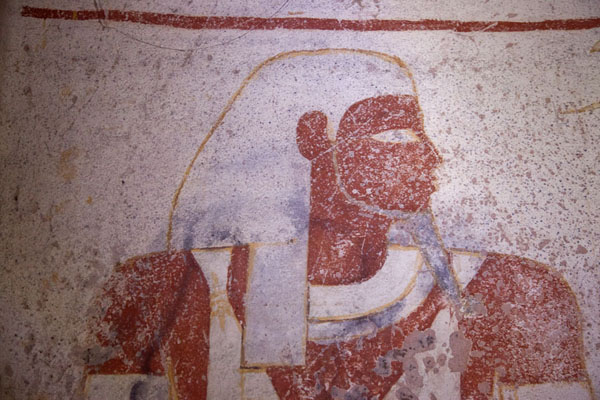
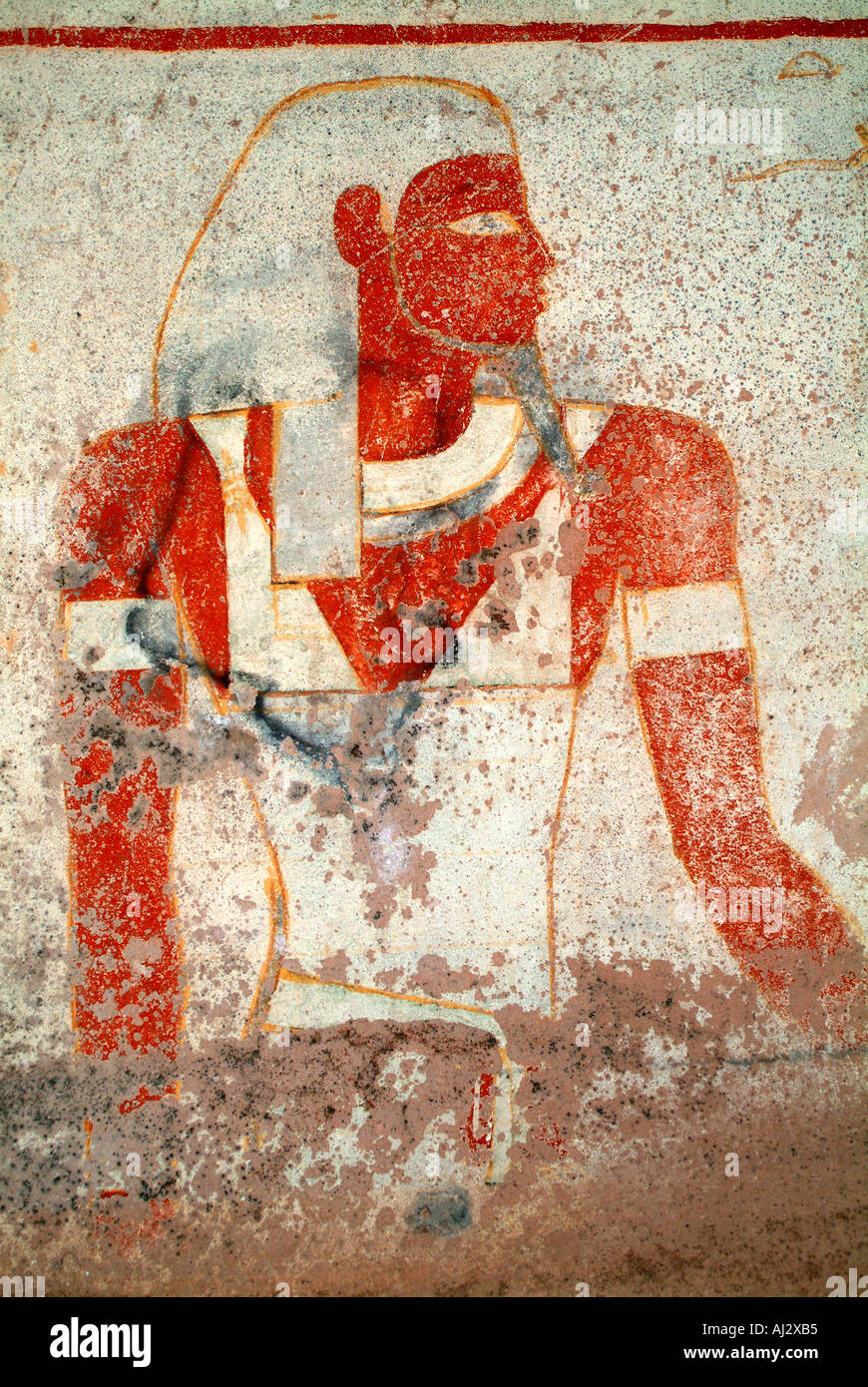


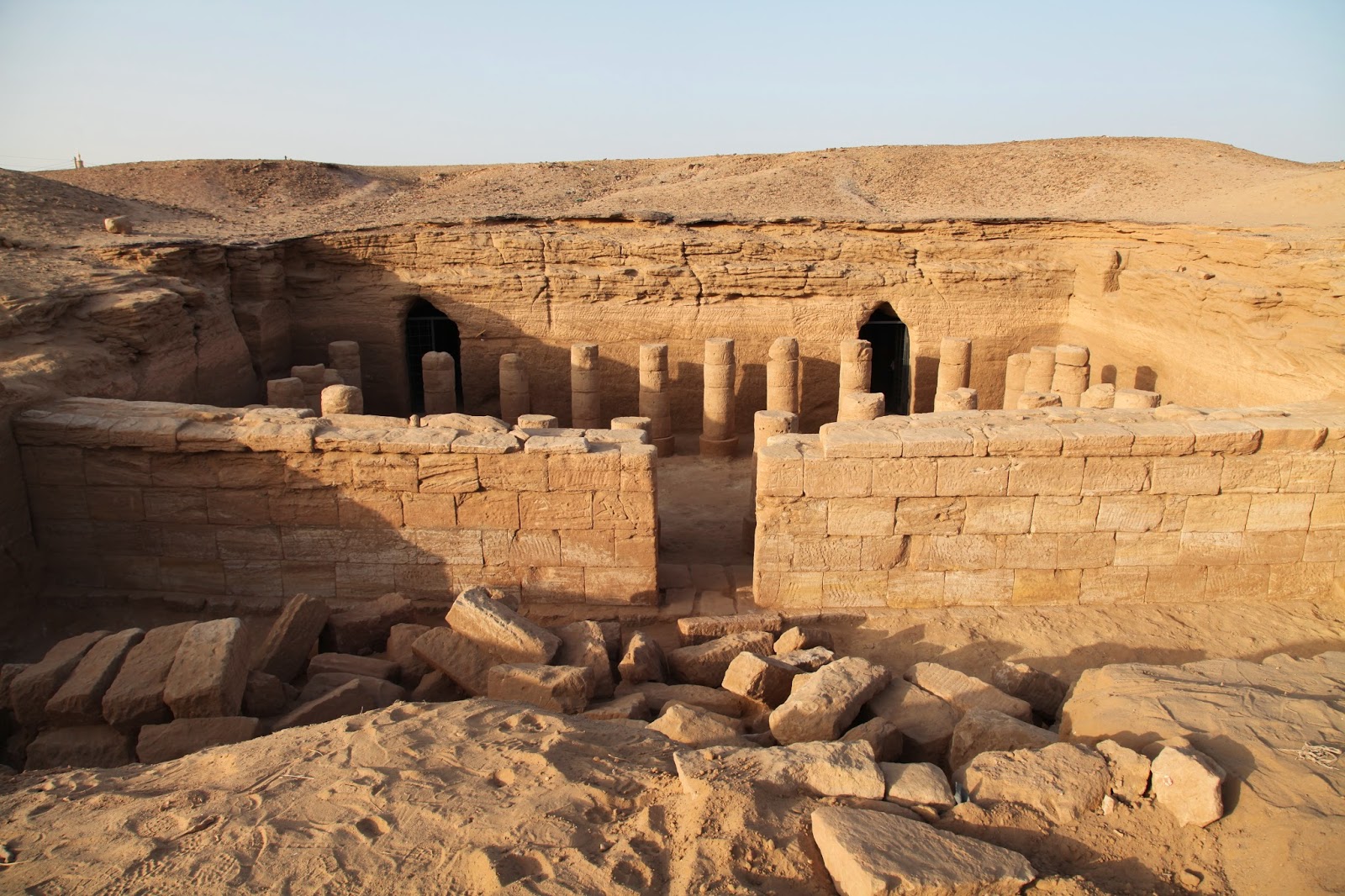
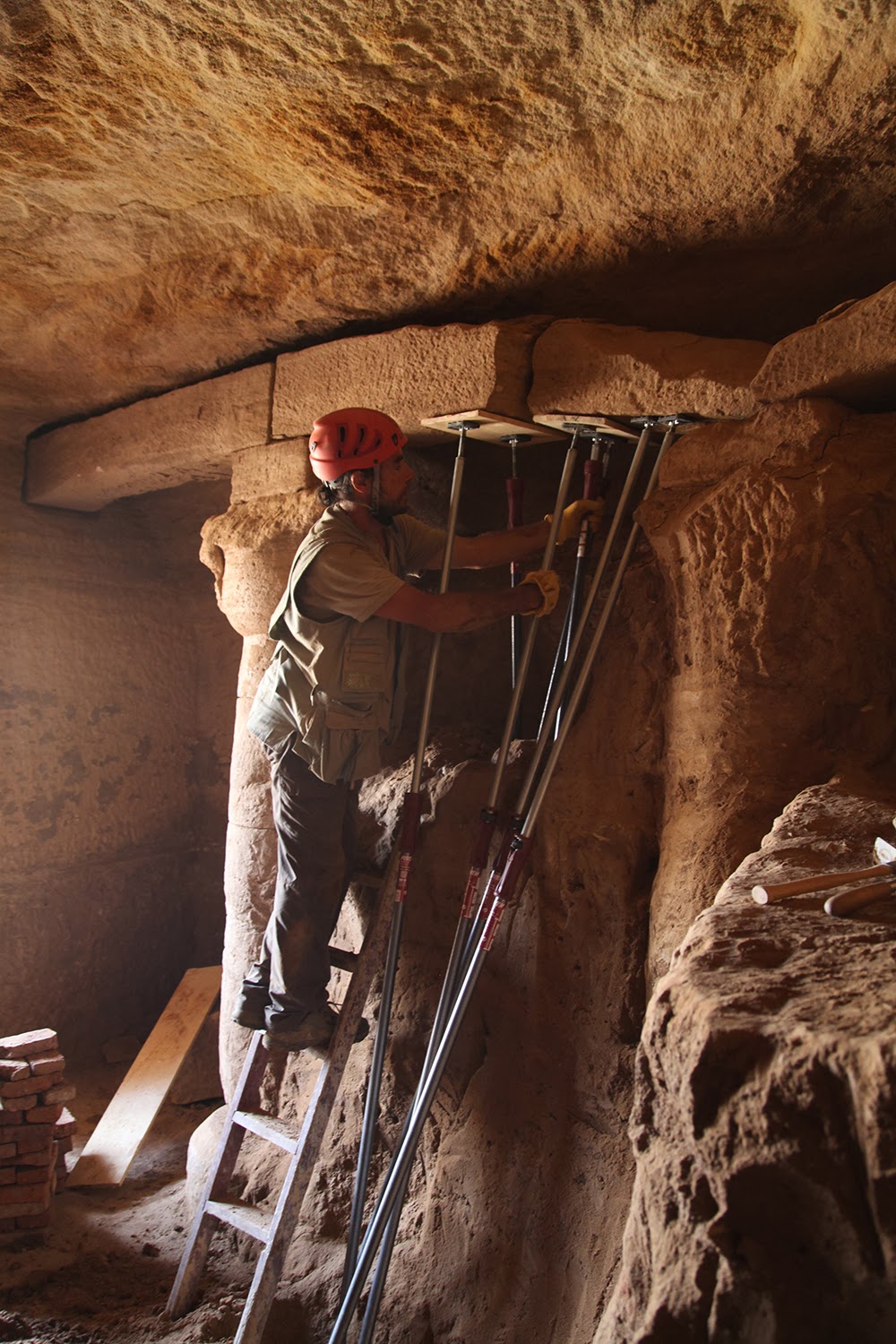
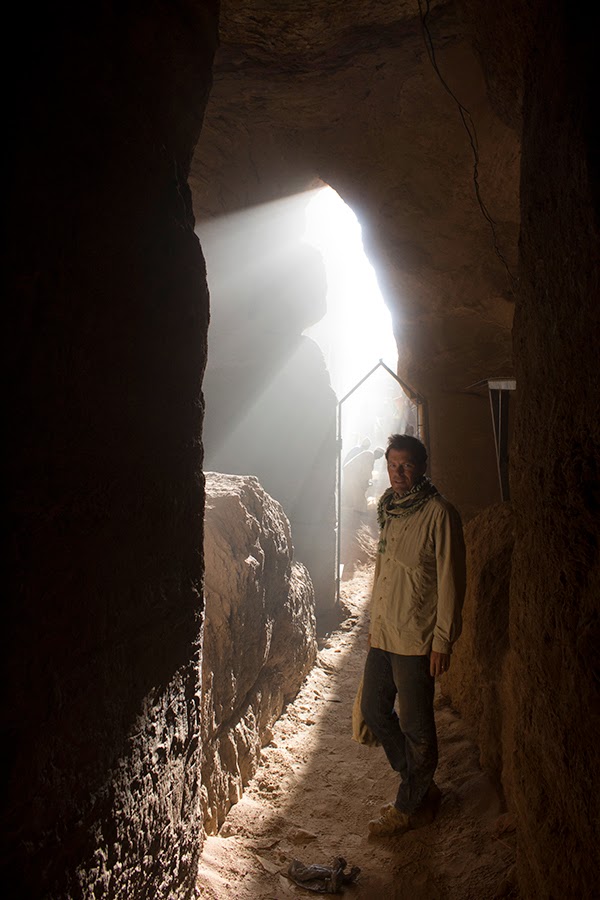

Aegis Isis Meroitic period
http://www.britishmuseum.org/explore/highlights/highlight_objects/aes/a/aegis_of_isis.aspx

Statue of Lady Sennuwy
El Kurru Tomb and temple








Last edited:
Misreeya
Pro
North Sudan ruins Temple of Naga


Last edited:
Misreeya
Pro
North Sudan
Temple of Soleb




Temple of Soleb




Last edited:
Misreeya
Pro
North Sudan
Nuri pyramid complex ruins.
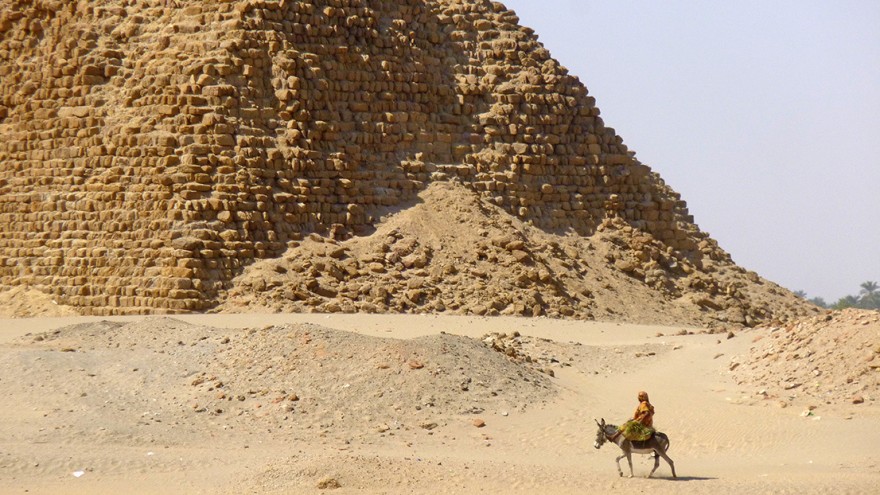
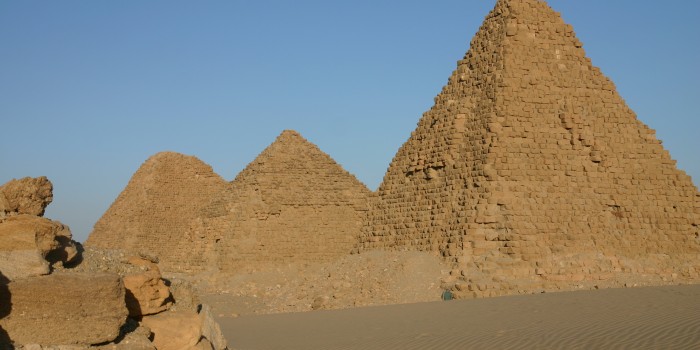
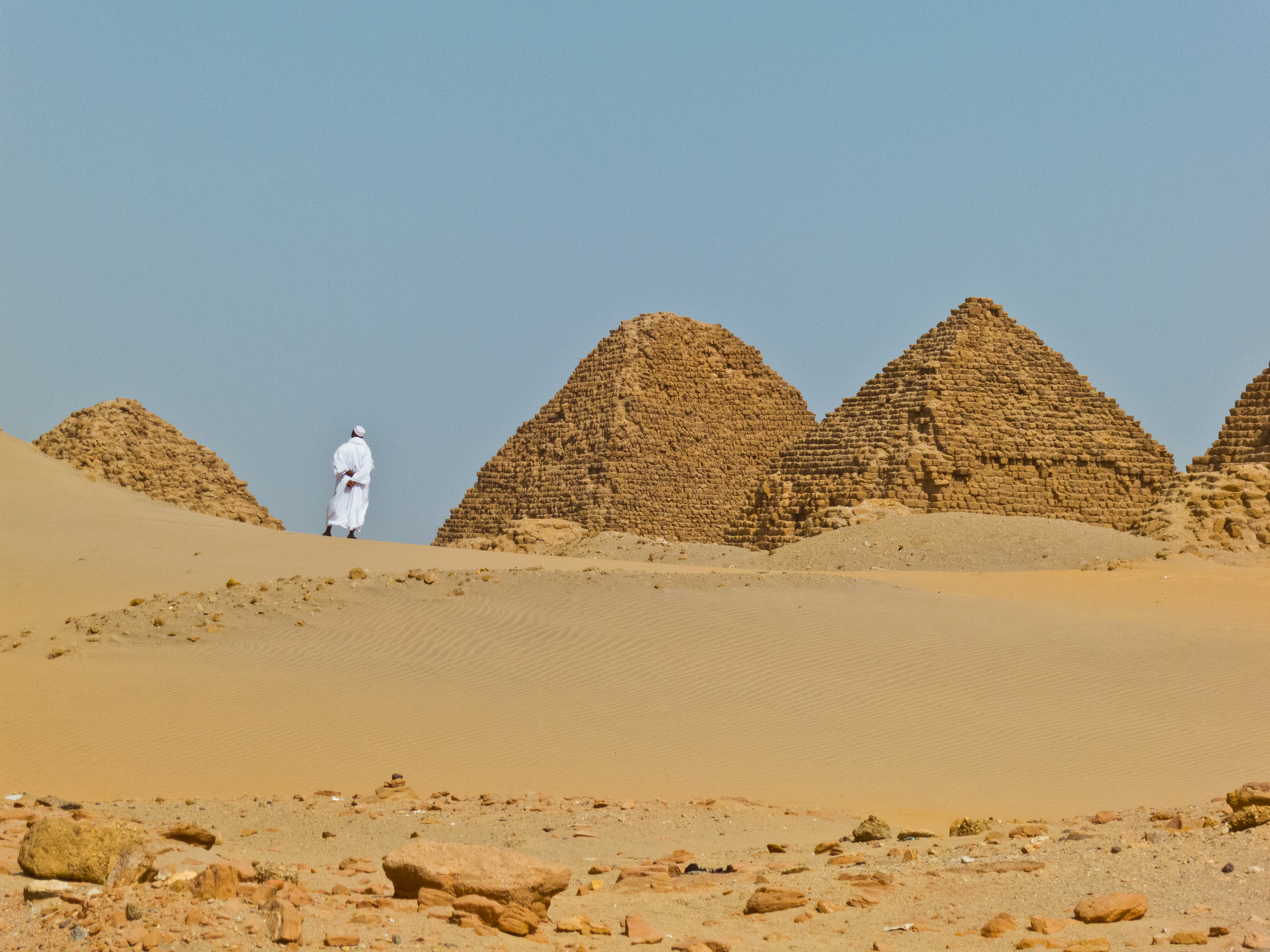
Nuri pyramid complex ruins.



Misreeya
Pro
Northern Sudan
Nuri pyramid ruins

For those that are students or Professional Architects or Engineers you may be impress with this monument. I did not explain in depth in the other thread, so i decided to do it here.
Although this ruin look like some sought of weird mound, it is actually a pyramid, and one of the largest in what is now Sudan. According to some scholars the height of the pyramids was btw 40 or 50 meters high, whereas other scholars believe the pyramid may had reached 79meters high and is a area of 51.75 m x 51.75 m. If the pyramid was 79meters in height it would had been bigger than the step Pyramids but smaller than the red Pyramid further north. The pyramid collapsed somewhere during the 1800, but there was a sketch drawing by a French artist during that period, who drew the pyramid near its full height, before it collapsed further. The pyramid had a chapel which is totally ruined, but what survived in tact is the burial chambers, which is very well preserved. It was excavated 100 years ago by George Reisner a American Egyptologist from Harvard University.
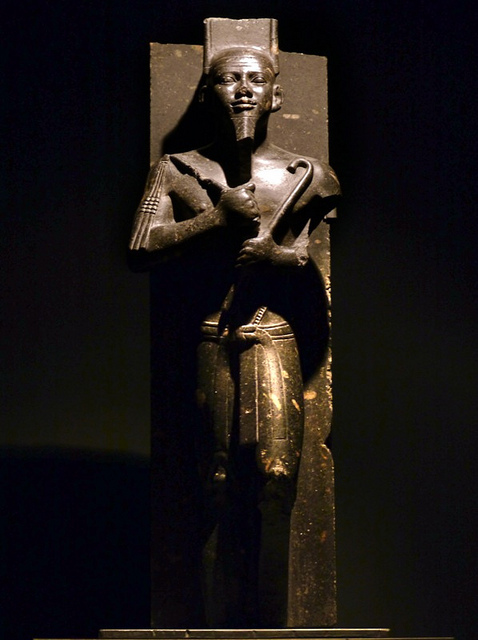
The person or pharaoh that is buried there was Taharka, he ruled what is now Sudan and Egypt today. He is actually mentioned in the old testament of the Jewish Torah or Bible. This period according to Egyptologist is considered the third intermediate period. According to what i read the burial chambers is pretty much the same size and scope as the Osirion in Abydos Egypt which was built during the New Kingdom period during the reign of the Set I.
Excerpt
However, the subterranean chambers of this pyramid are the most elaborate of any tomb. The entrance was by way of an eastern stairway trench, north of the pyramid's central axis, but in alignment with the original smaller pyramid. Three steps led down to a doorway with a molded frame and cavetto cornice. The doorway then led to a tunnel that widened and opened into an antechamber with a barrel- vaulted ceiling.Six huge pillars carved from the natural rock divided the burial chamber into two side aisles and a central nave, each with a barrel-vaulted ceiling.
Read more: http://www.touregypt.net/featurestor...#ixzz3ZXK8ffEk
Though a rectangular recess was cut into the floor of the burial chamber for a sarcophagus, no sarcophagus was found. In addition, there were four rectangular niches in the north and south walls and two in the west wall. The whole of the chamber was surrounded by a moat-like corridor that could be entered by way of steps leading down from in front of the antechamber doorway. Another set of steps led to the corridor from the west end of the nave. Indeed, the whole arrangement is not unlike theOsireion, a symbolic Osiris tomb built by Seti I at Abydos.
Read more: http://www.touregypt.net/featurestor...#ixzz3ZXKOYAjHPictures of the Osiron.




Here is the link of the excavation by George Reisner which is nearly 100 years ago. It is pretty much the same as Osirian further north. This construction is much to do with the people of the "nile" belief in their "god" Osirus, who was the brother and husband of Isis, and the father of horus, who each pharaoh believed they were part of, and Osirus had a brother by the name of Seth who killed him, and their father was Geb, and mother Mut. Osirus was the "god" of the underground. He is depicted in green skin as well.
Osiris - Wikipedia, the free encyclopedia
Osireion - Wikipedia, the free encyclopedia
http://books.google.com/books?id=J84...ramids&f=false
the exposition ^^above of the excavation back in 1916-1918 by George Reisner.



Question to a Archaeologist from a website of the el kurru temple in Sudan.
Geoff EmberlingApril 19, 2014 at 12:43 PM
The pyramid of Taharqo is an interesting and unusual monument. It was built once, then rebuilt much larger so that it is by far the biggest pyramid in Sudan. You can't go into the burial chamber now--Reisner excavated it and it is now filled back in. The burial chamber is about 12 x 13 m in size. I haven't had a chance to visit the Osireion, but from the published plan it is roughly comparable in length (about 10 meters)
http://historyofrchitecture.blogspot...0_archive.html
There are plans to revisit the pyramids, and excavate the burial chambers of all the pyramids in the complex, and it will be a all Sudanese and Egyptian team of Archaeologist, and i wish them luck.
Nuri pyramid ruins

For those that are students or Professional Architects or Engineers you may be impress with this monument. I did not explain in depth in the other thread, so i decided to do it here.
Although this ruin look like some sought of weird mound, it is actually a pyramid, and one of the largest in what is now Sudan. According to some scholars the height of the pyramids was btw 40 or 50 meters high, whereas other scholars believe the pyramid may had reached 79meters high and is a area of 51.75 m x 51.75 m. If the pyramid was 79meters in height it would had been bigger than the step Pyramids but smaller than the red Pyramid further north. The pyramid collapsed somewhere during the 1800, but there was a sketch drawing by a French artist during that period, who drew the pyramid near its full height, before it collapsed further. The pyramid had a chapel which is totally ruined, but what survived in tact is the burial chambers, which is very well preserved. It was excavated 100 years ago by George Reisner a American Egyptologist from Harvard University.

The person or pharaoh that is buried there was Taharka, he ruled what is now Sudan and Egypt today. He is actually mentioned in the old testament of the Jewish Torah or Bible. This period according to Egyptologist is considered the third intermediate period. According to what i read the burial chambers is pretty much the same size and scope as the Osirion in Abydos Egypt which was built during the New Kingdom period during the reign of the Set I.
Excerpt
However, the subterranean chambers of this pyramid are the most elaborate of any tomb. The entrance was by way of an eastern stairway trench, north of the pyramid's central axis, but in alignment with the original smaller pyramid. Three steps led down to a doorway with a molded frame and cavetto cornice. The doorway then led to a tunnel that widened and opened into an antechamber with a barrel- vaulted ceiling.Six huge pillars carved from the natural rock divided the burial chamber into two side aisles and a central nave, each with a barrel-vaulted ceiling.
Read more: http://www.touregypt.net/featurestor...#ixzz3ZXK8ffEk
Though a rectangular recess was cut into the floor of the burial chamber for a sarcophagus, no sarcophagus was found. In addition, there were four rectangular niches in the north and south walls and two in the west wall. The whole of the chamber was surrounded by a moat-like corridor that could be entered by way of steps leading down from in front of the antechamber doorway. Another set of steps led to the corridor from the west end of the nave. Indeed, the whole arrangement is not unlike theOsireion, a symbolic Osiris tomb built by Seti I at Abydos.
Read more: http://www.touregypt.net/featurestor...#ixzz3ZXKOYAjHPictures of the Osiron.




Here is the link of the excavation by George Reisner which is nearly 100 years ago. It is pretty much the same as Osirian further north. This construction is much to do with the people of the "nile" belief in their "god" Osirus, who was the brother and husband of Isis, and the father of horus, who each pharaoh believed they were part of, and Osirus had a brother by the name of Seth who killed him, and their father was Geb, and mother Mut. Osirus was the "god" of the underground. He is depicted in green skin as well.
Osiris - Wikipedia, the free encyclopedia
Osireion - Wikipedia, the free encyclopedia
http://books.google.com/books?id=J84...ramids&f=false
the exposition ^^above of the excavation back in 1916-1918 by George Reisner.


Question to a Archaeologist from a website of the el kurru temple in Sudan.
Geoff EmberlingApril 19, 2014 at 12:43 PM
The pyramid of Taharqo is an interesting and unusual monument. It was built once, then rebuilt much larger so that it is by far the biggest pyramid in Sudan. You can't go into the burial chamber now--Reisner excavated it and it is now filled back in. The burial chamber is about 12 x 13 m in size. I haven't had a chance to visit the Osireion, but from the published plan it is roughly comparable in length (about 10 meters)
http://historyofrchitecture.blogspot...0_archive.html
There are plans to revisit the pyramids, and excavate the burial chambers of all the pyramids in the complex, and it will be a all Sudanese and Egyptian team of Archaeologist, and i wish them luck.
Last edited:
the big homie bdizzle wanted to do one for Mansa Musa, but I'll start it, he can add on


-the second picture was drawn in Europe after his trip to the Mecca
-Mansa literally means Emperor, also named Kankan Musa
-became the Mansa after his uncle Abu-Bakr II failed to return after a voyage to the Americas
-Most famous for his trip to Mecca, his construction of Timbuktu and the U of Sankore, and the conquest of Songhai
-Spent so much gold in Egypt that the value of it was devalued
-also famous for his construction of huge temples across the continent, which were designed by Abu Ishaq Al Sahili the moor
-Originally planned to stay in the Mecca, but his son was useless as a leader and there was war with Songhai. He returned to his territory as Mali defeated Songhai, and he went there first to make them bow down to him and for them to accept terms of surrender.
-was skilled in diplomacy
 I think I might name my future son Munsa to pay respects to the goat
I think I might name my future son Munsa to pay respects to the goat




